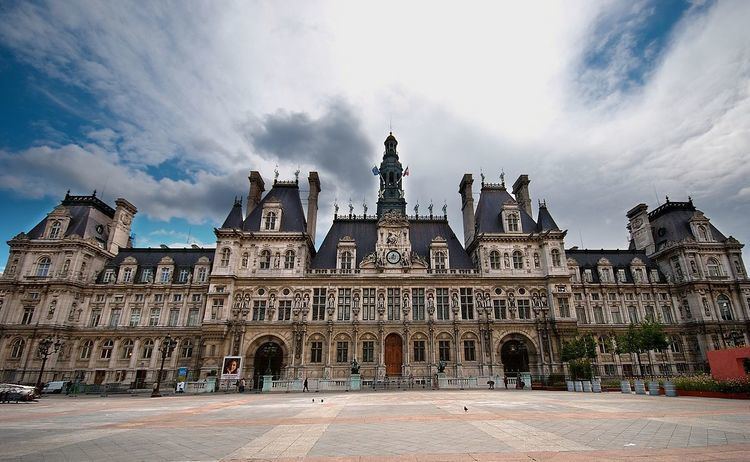Length 155 m (509 ft) Quarter Saint-Merri. Denomination 1803 Inaugurated 1803 | Width 82 m (269 ft) Completion Unknown Arrondissement 4th arrondissement | |
 | ||
From 2 quai de Gesvres and quai de l'Hôtel De Ville Address Place de l'Hôtel de Ville, 75004 Paris, France Hours Open today · Open 24 hoursTuesdayOpen 24 hoursWednesdayOpen 24 hoursThursdayOpen 24 hoursFridayOpen 24 hoursSaturdayOpen 24 hoursSundayOpen 24 hoursMondayOpen 24 hoursSuggest an edit | ||
The public square in the 4th arrondissement of Paris that is now the Place de l'Hôtel de Ville (City Hall Plaza) was, before 1802, called the Place de Grève. The French word grève refers to a flat area covered with gravel or sand situated on the shores or banks of a body of water. The location presently occupied by the square was the point on the sandy right bank of the river Seine where the first riverine harbor of Paris was established.
Contents
The Place de Grève
Later it was used as a public meeting-place and also as a location where unemployed people gathered to seek work. This circumstance accounts for the current French expressions, être en grève (to be on strike) and faire (la) grève (to go on strike).
However, the principal reason why the Place de Grève is remembered is that it was the site of most of the public executions in early Paris. The gallows and the pillory stood there.
The highest-profile executions took place on the grève, including the gruesome deaths of the assassins François Ravaillac and Robert-François Damiens, as well as the bandit-rebel Guy Éder de La Fontenelle. In 1310 the Place de Grève was also the site of the execution of the Beguine heretic Marguerite Porete. On 22 February 1680, the famous French fortune teller, poisoner and alleged sorceress La Voisin was burned to death in the square.
In 1243 Louis IX of France ordered 24 cartloads of Talmud manuscripts to be burned at the square.
Location
The southern end of the Place de l'Hôtel de Ville, the end closer to the river, is on the right-bank side of the Pont d'Arcole, which crosses eighty metres of water to reach the island, Île de la Cité, in the middle of the Seine. At this point on the riverbank, the Place de l'Hôtel de Ville is formed by the convergence of three streets: two quays on the river, Quai de l'Hôtel de Ville, and Quai de Gesvres, and the rue de Renard. The rue de Renard, which passes in front of the Paris city hall, the Hôtel de Ville de Paris, forfeits its name for one city block, adopting instead "Place de l'Hôtel de Ville" addresses.
Metro station
The Place de l'Hôtel de Ville is:
served by lines 1 and 11.
